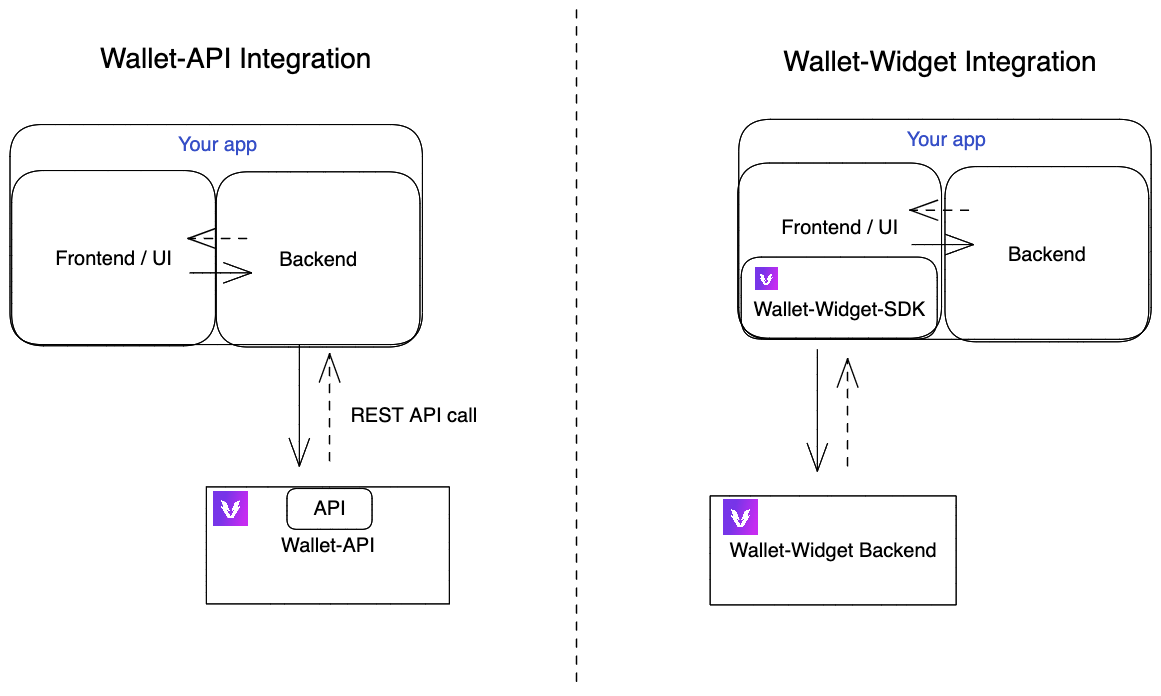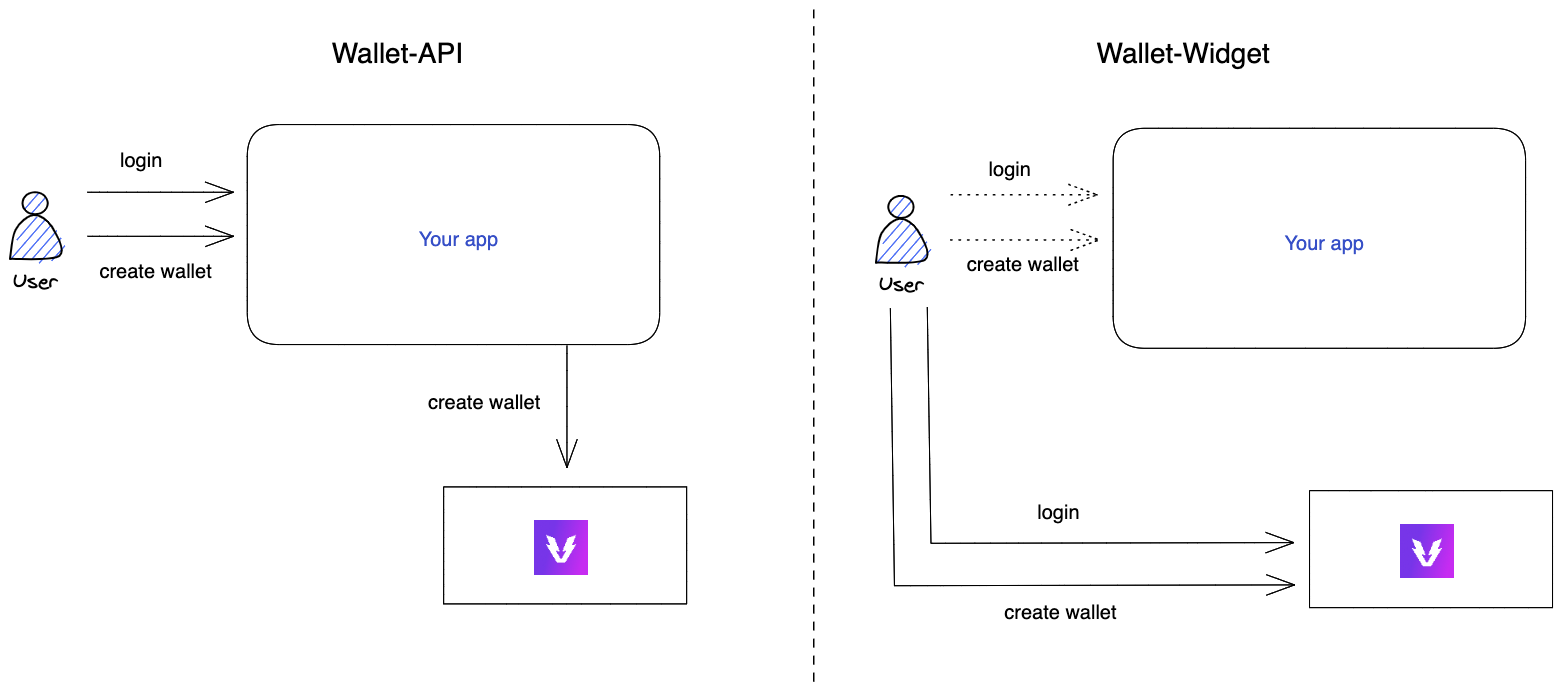Wallet-API vs Wallet-Widget
In-depth comparison between the Wallet-API and Wallet-Widget products.
Wallet-API vs Wallet-Widget
This guide explains the difference between our Wallet-API solution and our Wallet-Widget solution.
Both solutions offer a similar feature set:
- Create Wallets for your users
- Retrieving the native balance of these wallets
- Retrieving the (non-)fungibles (ERC-1155, ERC-721 and ERC-20) of these wallets
- Performing transfers of native and fungible tokens on these wallets
- Performing NFT-transfers on these wallets
- Performing contract calls on these wallets
- Signing messages with these wallets
- Importing / Exporting wallets
However, there are several key conceptual differences between the Wallet-API and the Wallet-Widget solution. These are explained below.
Technical Differences

Wallet-AP vs Wallet-Widget
| Wallet-API | Wallet-Widget | |
|---|---|---|
| Technical Architecture / Integration | The Wallet-API is a pure REST backend-to-backend integration. | The widget is an SDK that is integrated in your frontend / browser application. |
| Authentication / Security | You will receive a | You will receive a |
| Development | Requires backend development. | Requires frontend development. |
| UI flexibility | As the Wallet-API is a purely API-solution, you have full control over the frontend in your app. | The Widget provides out-of-the-box screens for your endusers: login, create wallet, sign for a transaction, etc. |
Functional / Conceptual Differences

Functional Differences
Wallet-API | Wallet-Widget | |
|---|---|---|
User login | User login has to be provided by yourself. You are in full control of the authentication mechanism of your users. | The Venly-Widget offers an authentication mechanism for the wallet-users. Moreover, authentication of the user at Venly is mandatory, before any blockchain functionality can be triggered on the wallet of the user. The authentication mechanism can be used as Identity provider (IdP) in your app. |
User | The user is not known at Venly. Every API-call performed is done in your name (clientId). No end-user information needs to be supplied. | The user is known/authenticated at Venly. Your app can retrieve the user's profile (email, firstname, etc.). Every functionality triggered through your app (e.g. perform a transfer) will be done in the name of the user. |
Wallet ownership | From Venly's perspective, the created wallets are owned by you (as we do not know the end-user). | The created wallets are owned by the end-user. |
User interaction | (OPTIONALLY) You can have full control over the created wallets. No user interaction is needed to access them. |
|
Users are not able to use the created wallets in the Venly Wallet interface (we do not know them). | Users can login into the Venly Wallet interface and manage the created wallets. | |
User support | Users have to contact you. You can contact Venly support with the necessary information (e.g. | Users can contact Venly support immediately. |
Legal / compliancy differences

Legal Differences
Wallet-API | Wallet-Widget | |
|---|---|---|
Custodial? | For Wallet-API, Venly is considered the "technology provider". As a client, you have two options.
In this case, Venly is also not able to access the wallets: they are considered UNRECOVERABLE unless your user has an emergency signing method. If a user loses their PIN code, they can reset it using their emergency signing method. | Venly is considered the non-custodial wallet provider. We have no control over the funds in the wallets. Funds will stay in the sole ownership of the user. You create non-custodial wallets. You will require user interaction, whenever a user wants to perform an action on a wallet (e.g. they need to provide a PIN code). The users are responsible to store their PIN code, and optionally they can create an emergency code, which can be used to restore the PIN code if needed. See Terms&Conditions. |
Updated 2 months ago